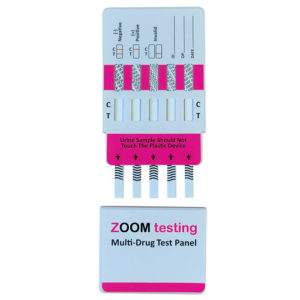There has been a rapid increase in workplaces in the UK adopting drug and alcohol testing. There is no doubt that the growing drugs culture is responsible for this increase, as employers implement alcohol and drug testing policies in an endeavour to keep their staff safe and prevent workplace accidents. These policies are typically preceded by an amnesty period, allowing time for employees with drug or alcohol dependencies to deal with their addictions to alcohol, and/or recreational or prescription drugs prior to being tested in the workplace. Rather than the employee’s dependency being established by a new testing policy, the amnesty provides a better and more sensitive way of dealing with the issue.
While it’s true that there is certainly a drug abuse problem in the United Kingdom, many might assume that it’s all recreational. Unfortunately, that’s not the case and the workplace is just another part of our society where the use, and abuse, of alcohol and drugs have become a daily reality. Under the Health and Safety at Work Act, employers in the United Kingdom are bound by duty to ensure the safety of their workplace, and this includes ensuring that their staff members not carry out their duties whilst under the influence.
Comparing the UK to the US
Businesses have legal and statutory obligations to not only to protect the safety, welfare, and health of their staff, but also the reputation of their business, which is why drug testing has become mandatory in a wide range of industries. Still, drug testing is not mandatory even though testing is on the rise. In the United States, drug testing is mandatory in a large number of workplaces, with 78% of employers implementing a drug and alcohol testing program. These rates are higher than in the UK; however, this will change as more businesses in the UK become aware of just how harmful the implications are of allowing drug abuse to exist in the workplace.
Testing Facts and Statistics
Drug testing in the UK workforce effectively began with Section 8 of the Misuse of Drugs Act of 1971. Under this act, any employer who knowingly allowed drug use in the workplace could face prosecution.
In the 1980s, we saw the marketing of the first drug testing kits, and at the same time there was a rapid increase in drug use. At that time, 15 to 20% of young adults admitted they had tried an illegal drug, but this figure rose sharply in 1995 to almost half of all young adults admitting trying an illegal drug.
Testing in the workplace was still confined to a small number of firms even two decades after the first testing kits were used in the UK. The Chartered Institute of Personnel and Development released a study in 2001 showing that, of approximately 60% of the companies surveyed, only 18% had carried out workplace testing. The Independent Enquiry into Drug Testing at Work reported in 2014 that 16% of employers were using random testing while 14% were using pre-employment testing. Interestingly, 27% were not even aware of what the policy involved, with just 13% stating they had an audit procedure in place.
Today, the law remains the same, with workplace testing not forbidden, but still not mandatory. Testing in the workplace must be carried out in accordance with human rights legislation and employment contracts.
According to statistics from Public Health England, since the year 2007 drug use of people aged between 16 to 59 years has stayed constant at approximately 9% of the England and Wales population; however, this figure rises sharply to 19.8% in the 16 to 24 years age group. And, each year there’s been an increase in the number of employers either enhancing their existing policies or seeking to implement new alcohol and drug testing in their workplace. According to a forecast by the European Pharmaceutical Review, the testing industry will increase from £167 million in the year 2017 to £231 million in the year 2019.
Testing Procedures Used in the Workplace
The processes for drug and alcohol testing can be difficult and embarrassing for employees, so it’s up to employers to do their research and implement the most unobtrusive testing methods in their workplace. To this end, there is a wide variety of testing procedures available on the market today, and these include hair sampling, urinalysis, and oral (swab). While urinalysis tests for lifestyle rather than impairment, it can be humiliating for female employees; while oral testing only tests for impairment at the actual time of testing and is certainly a more acceptable and less mortifying experience for employees.
Drug and Alcohol Testing: Who Is Responsible?
HR and Health Safety should be jointly responsible for testing programs, and ideally they would work in unison to communicate the same message. Employers should clearly explain to their staff members why a substance misuse policy is being implemented, as well as the resulting consequences if an employee should test positive for substance abuse. In addition, an amnesty should be offered to employees whereby they have the opportunity to approach HR or their manager with concerns relating to an addiction or medication that could potentially produce a positive test result.
HR professionals have the leeway to implement alcohol and drug testing programs in conjunction with a well-being strategy focusing on rehabilitation for any employee who may be experiencing issues with alcohol and/or drugs. Some employers may be able to direct an employee to their internal Occupational Health Department, while other employees can find local assistance through the NHS and Talk to Frank.
Concerning Trends
Many part-time athletes in a number of different sports are taking a variety of substances to either improve performance or minimise muscle fatigue. This is of great concern because, not only have many of these substances not been tested or approved, some contain levels of cannabis (THC) that are high enough to test positive in a drugs test. Employers should discuss this matter with their staff members and advise they only take substances that have approval from Informed Sport. This will prevent employees from unknowingly testing positive during a drugs test in their workplace
It’s also imperative that drug policies be reviewed by employers on a regular basis to ensure they stay up to date with changes in the law and any new drugs that may emerge. In April 2019, Gabapentin and Pregabalin were reclassified as Class C drugs. These are two prescription drugs that would show on a (back-to-lab) confirmatory test, but they wouldn’t show on traditional testing methods as used by an outsourced screening service or an employer.
It’s up to employers to stay current with new and emerging trends in drugs as well as prescription drugs that may be reclassified. This is the only way of ensuring that their policies on substance misuse stay current and fit for purpose.
There is no doubt that the use of alcohol and drug testing will continue increasing in the UK workplace, so employers should prepare themselves and their employees for the effect this could have on both their business lives and their personal lives.
The Effects of Workplace Drug and Alcohol Abuse
Substance abuse in the workplace can have serious consequences not only for the individuals involved but also for the company as a whole. Employees who come to work intoxicated are more likely to have accidents, injuries, and near misses. They may also be less productive, have higher absenteeism, and poorer relationships with coworkers.
From a company perspective, workplace substance abuse can lead to:
- Increased costs from accidents, injuries, absenteeism, and lost productivity
- Higher employee turnover as drug users change jobs more frequently
- Greater liability risks and higher insurance premiums
- Damage to the company’s reputation if there are accidents or incidents caused by intoxicated employees
There can also be ripple effects that impact other employees’ morale, engagement, and feelings of safety at work. Companies that don’t address substance abuse issues may find it harder to attract and retain top talent.
Health Consequences
In addition to risks of overdose and addiction, long-term alcohol and drug abuse can cause severe health issues including:
- Liver, kidney, heart and brain damage
- Increased risk of cancer
- Mental health problems such as depression and anxiety
- Financial problems and homelessness
People struggling with substance dependence often try to hide it from friends, family and coworkers out of shame or fear of losing their jobs. An employee assistance program can connect workers to counseling, treatment referrals, and community resources. Removing stigma around addiction and providing confidential ways for employees to access help when needed should be part of every workplace drug policy.
Signs of Substance Abuse
Common warning signs of alcohol or drug addiction include:
- Smelling of alcohol or marijuana
- Slurred speech and lack of coordination
- Hidden liquor bottles or drug paraphernalia found around the workplace
- Increased mistakes, accidents and calling out sick
- Avoidance of managers and lateness coming back from breaks
- Sudden declines in appearance and hygiene
- Extreme mood swings and irritability
Management should document any observed signs of impairment or rule violations and address them promptly. However, conclusions shouldn’t be jumped to as changes in behavior or performance could stem from other issues. Open and caring communication is key.
Photo: “Workers” by Anthony Cunningham for Zoom Testing
Zoom Testing is a leading UK drug testing company and a supplier of Drug Test Kits.






